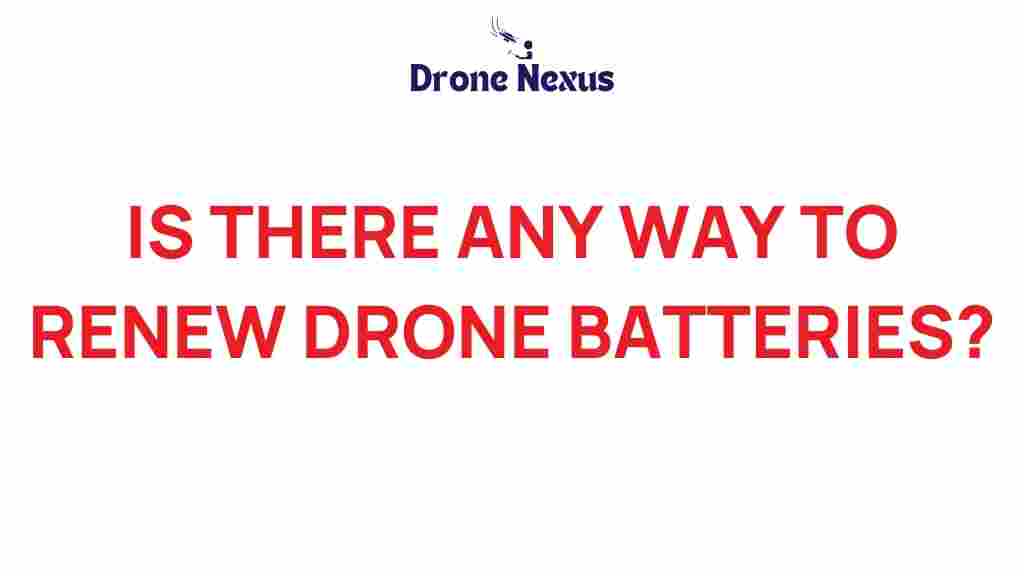Drone Batteries: The Key to Unlocking Extended Flight Times
In the world of drones, battery life is one of the primary concerns for both hobbyists and professionals alike. The performance of your drone heavily relies on the quality and longevity of its drone batteries. Whether you are capturing stunning aerial photographs, surveying land, or simply enjoying a leisurely flight, understanding how to renew and maintain your drone batteries can significantly enhance your flight experience. In this article, we will explore the importance of drone batteries, how to renew them for extended flight times, troubleshooting tips, and more.
Understanding Drone Batteries
Before diving into the renewal process, it’s essential to understand the different types of drone batteries available in the market:
- Lithium Polymer (LiPo): The most common type used in drones due to their high energy density and lightweight.
- Lithium-Ion (Li-Ion): These batteries are known for their longevity and are often used in larger drones.
- Nickel-Metal Hydride (NiMH): Less common, these batteries are heavier and have a lower energy density compared to LiPo and Li-Ion.
Understanding the characteristics of these drone batteries will help you make informed decisions about charging, renewing, and maintaining them.
Why Renew Your Drone Batteries?
Renewing your drone batteries is crucial for several reasons:
- Extended Flight Times: Renewed batteries can provide longer flight times, allowing you to enjoy your drone for extended periods.
- Improved Performance: Regularly maintained batteries ensure that your drone operates at its best, reducing the risk of mid-flight failures.
- Cost-Effectiveness: Renewing existing batteries can be more economical than purchasing new ones frequently.
Step-by-Step Process to Renew Drone Batteries
Now that we understand why it’s essential to renew drone batteries, let’s delve into the step-by-step process to ensure that your batteries remain in top condition.
1. Inspect the Battery
Before attempting any renewal processes, carefully inspect your drone batteries for any visible damage, such as:
- Bulging or swelling
- Corrosion on the terminals
- Cracks or punctures
If you notice any of these issues, it’s best to replace the battery rather than renewing it.
2. Clean the Battery Contacts
Dirty contacts can significantly affect battery performance. Use a soft cloth or a cotton swab dipped in isopropyl alcohol to clean the battery terminals. This will help ensure a better connection with your drone.
3. Balance the Cells
For LiPo batteries, it’s crucial to balance the cells to maximize their lifespan. Use a LiPo balance charger to ensure that all cells are charged evenly. This process can prevent issues such as cell swelling or failure.
4. Charge Properly
Always use a charger that is compatible with your drone batteries. Follow these tips for optimal charging:
- Never overcharge the battery; adhere to the recommended voltage.
- Avoid charging in extreme temperatures, as this can damage the battery.
- Charge the battery in a safe area, away from flammable materials.
5. Store Correctly
Proper storage of drone batteries can significantly extend their life. Here are some tips:
- Store batteries at a partial charge (about 40-60%) to prevent degradation.
- Keep them in a cool, dry place away from direct sunlight.
- Use a fireproof bag for added safety.
Troubleshooting Common Drone Battery Issues
Despite your best efforts, you may encounter issues with your drone batteries. Here are some common problems and their solutions:
1. Battery Not Charging
If your battery isn’t charging, try the following:
- Check the charger and ensure it’s functioning properly.
- Inspect the battery terminals for dirt or damage.
- Try charging a different battery in the same charger to see if the issue is with the battery or the charger.
2. Short Flight Times
Experiencing shorter flight times can be frustrating. Consider these solutions:
- Inspect for damage or swelling in the battery.
- Ensure the battery is fully charged before flight.
- Check the drone’s weight; carrying excess load can reduce flight time.
3. Overheating
If your battery is overheating, it’s crucial to stop using it immediately. Here’s what you can do:
- Allow the battery to cool down before handling it.
- Check for any visible signs of damage.
- Evaluate your charging practices; ensure you are not overcharging.
Conclusion
Renewing your drone batteries is vital for maximizing your flying experience, extending flight times, and ensuring the performance of your drone. By following the outlined steps for inspection, cleaning, charging, and storage, you can significantly enhance the lifespan of your batteries. Remember to troubleshoot common issues promptly to avoid compromising your flying adventures.
For more information on drone maintenance, check out this comprehensive guide on drone care and safety. Don’t forget to stay updated on the latest advancements in battery technology, as new developments can lead to even longer flight times and improved performance.
This article is in the category Technology and created by DroneNexus Team
